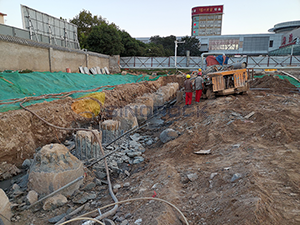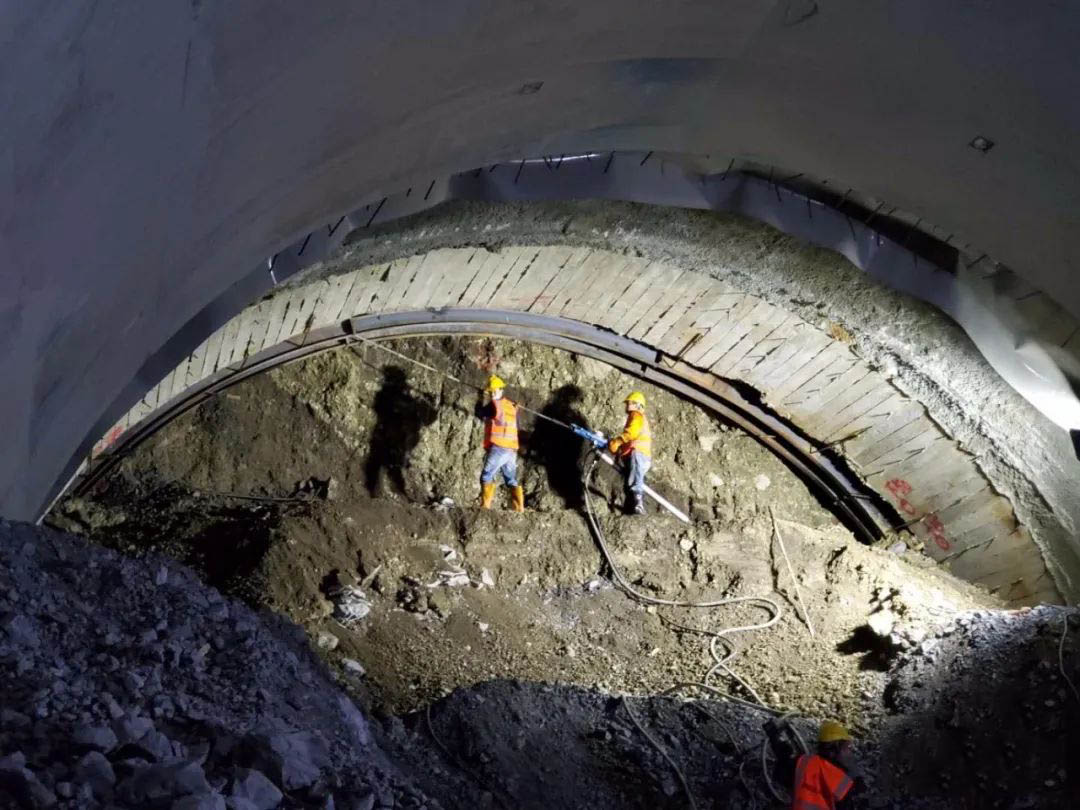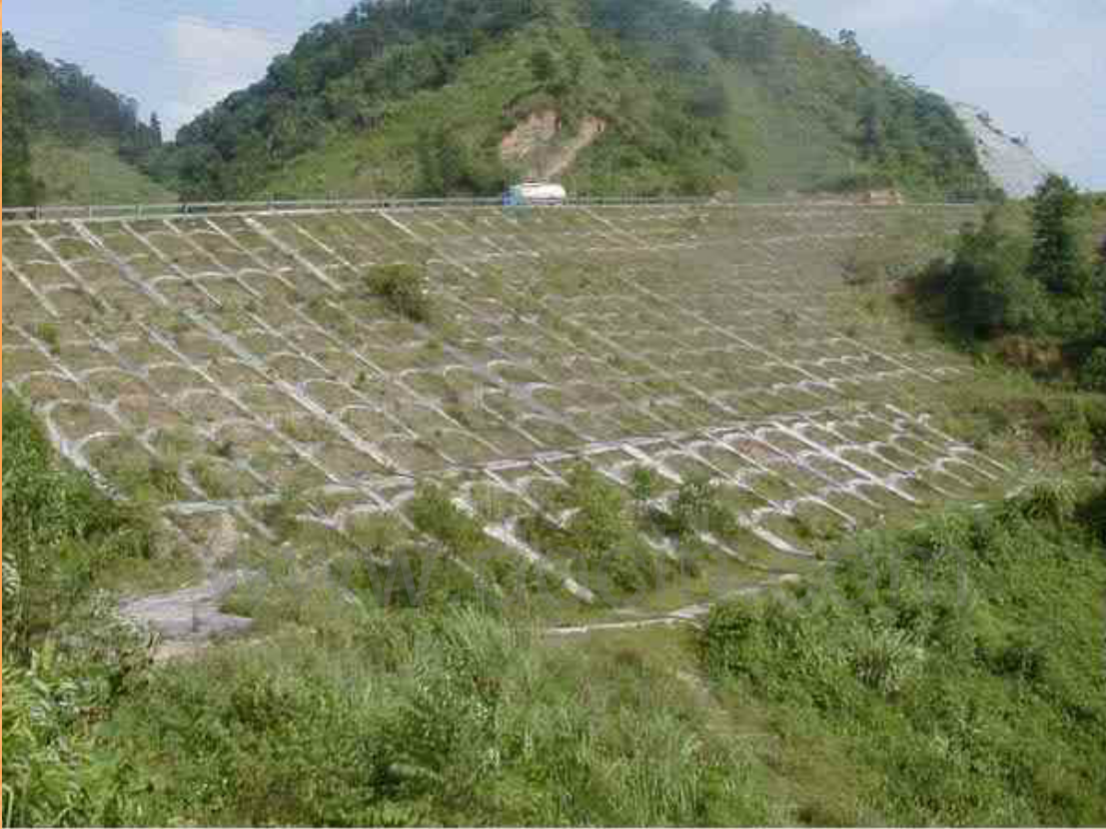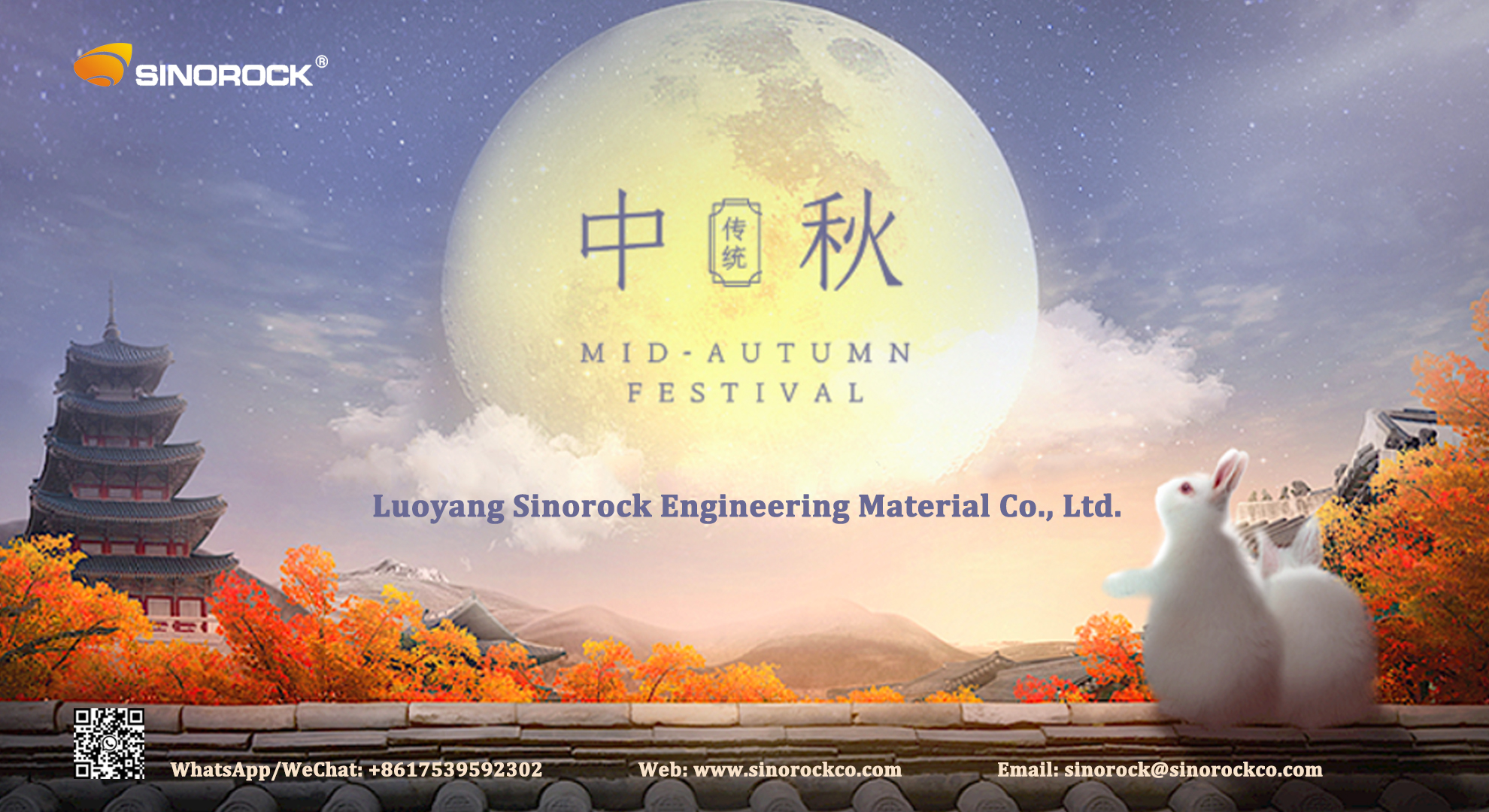The Design of Self Drilling Anchor Bolt
Time:2023-09-01From:sinorock View:
In the realm of modern construction and geotechnical engineering, innovation continues to propel the industry forward, introducing groundbreaking solutions that redefine the way we build and secure structures. One such innovation is the self-drilling anchor system – a marvel of engineering that has revolutionized the art of anchoring and reinforcement in challenging geological conditions.Evolution of a Solution: Self-Drilling Anchor System
A self-drilling anchor bar, at first glance, might appear to be a simple amalgamation of components – a hollow, thick-walled seamless steel pipe adorned with a standard continuous thread on its surface. Yet, beneath this unassuming exterior lies a sophisticated and adaptable solution that caters to the most demanding construction scenarios. Comprising a self-drilling hollow anchor bar, plate, nut, coupling, and drill bit, this engineering marvel transcends its humble appearance.
Engineering Marvel: Components and Structure
The core of the self-drilling anchor system's functionality lies in its construction. The anchor bolt is not just a standalone piece but a meticulously designed system that combines various components to achieve its objectives. The self-drilling hollow anchor bar serves as the backbone of the system. Its hollow nature allows for the injection of grouting material, which enhances the anchor's bonding and anchoring capabilities.
The grouting body, another integral part of the anchorage system, interacts synergistically with the self-drilling hollow bar. This interaction is where engineering acumen truly shines. The size and proportions of the grouting body are carefully calibrated based on the intended use and the design's anchorage requirements. The cohesion between the grouting body, the self-drilling anchor bar, and the surrounding soil is a crucial aspect that defines the effectiveness of the anchor.
Design Validation: Rigorous Testing and Analysis
In the realm of construction engineering, theoretical designs must withstand the scrutiny of practicality. This principle holds true for self-drilling anchor bolts. When these bolts are earmarked for the reinforcement of slopes or similar applications, rigorous testing protocols come into play. The pulling test takes center stage, evaluating the pulling resistance, length, and diameter of the anchorage segment. These parameters are pivotal in determining the bonding strength and shearing strength between the grouting body, self-drilling anchor bar, and the encompassing soil.
The Nexus of Design and Practicality
For any construction innovation to find its place in the industry, it must seamlessly align with both theoretical design and practical implementation. The self-drilling anchor system excels in this aspect. As construction projects become increasingly complex, the need for meticulous planning becomes all the more apparent. This planning hinges on establishing the supporting parameters that define the self-drilling anchor bolt's role. Parameters such as anchorage force, length, and diameter of the anchor bolt, separation distance, and array pitch all play a critical role in ensuring the success of the anchor's deployment.
Applications and Future Horizons
The applications of self-drilling anchor systems span a wide spectrum of geotechnical challenges. From broken strata to sandy gravel, and even high water-bearing strata, these versatile anchors find their utility in diverse scenarios. Particularly notable is their efficacy in slope support within narrow and deep foundation pits. The absence of casing coupled with the economic and high-efficiency attributes of these bolts makes them an appealing choice for modern construction projects.
Looking ahead, the evolution of self-drilling anchor systems continues as engineers and researchers explore ways to enhance their performance and adaptability. As construction practices evolve and our understanding of geotechnical dynamics deepens, it is likely that self-drilling anchor bolts will undergo further refinements, cementing their position as a cornerstone of geotechnical engineering.
Conclusion
The design of self-drilling anchor systems epitomizes the fusion of innovation, engineering prowess, and practicality in the realm of modern construction. Behind the seemingly straightforward components lies a system that has the potential to reshape the way we approach challenging geotechnical conditions. As these bolts continue to anchor structures and stabilize terrains, they stand as a testament to the indomitable spirit of human ingenuity in overcoming the most complex of construction challenges.
latest news
-

- Common quality problems in rock bolts construction
- Time:2024-04-19From:This Site
- In the current tunnel support systems, as a very effective support method, rock bolt has been widely used in recent years. Rock bolt can not only stabilize the surrounding rock in the construction process, but also play a role as a part of the permanent support structure after the construction, so it is very important to ensure the construction quality of rock bolt.
- View details
-

- How to Support Tunnels in Sand Layer?
- Time:2024-04-17From:This Site
- How to support efficiently when the tunnel project encounters sand layers? Tunnels prone to collapse when construction in sand, and it must be supported with rock bolts for safety and stabilization.
- View details
-

- Slope Engineering: Ensuring Stability and Safety
- Time:2024-04-12From:This Site
- The slope is the natural or man-made inclination of the earth's surface, referring to all geological bodies on the earth's surface with inclination to the airside of the ground, are the geomorphic landscape widely distributed on the earth's surface, playing an important role in shaping the landscape. While slopes are crucial for the environment and human development, they can also pose risks due to slope failures and landslides. This has led to slope engineering, a multidisciplinary field, that focuses on assessing, managing, and mitigating the risks associated with slopes.
- View details
-
.png)
- International Women's Day with Strawberry-picking
- Time:2024-03-09From:This Site
- Marked the annual observance of International Women's Day, and to commemorate this significant event, Sinorock organized a special strawberry-picking event exclusively for its female employees.
- View details
-

- Celebrate the 74th anniversary of the founding of the People's Republic of China
- Time:2023-10-01From:This Site
- On October 1st every year, we observe the annual National Day, commemorating the birth of our beloved motherland.
- View details
-

- Happy Mid-Autumn Festival!
- Time:2023-09-29From:This Site
- The Mid-Autumn Festival which also known as the Mooncake Festival. This annual festival falls on the fifteenth day of the eighth month of the lunar calendar and is called the Mid-Autumn Festival because it falls in the middle of the three months of autumn.
- View details
-

- SINOROCK Set to Showcase Anchoring Solutions at MINING & CONSTRUCTION VIETNAM 2024
- Time:2024-03-27From:This Site
- HANOI, VIETNAM —SINOROCK is thrilled to announce its participation in the upcoming MINING & CONSTRUCTION VIETNAM 2024 exhibition, scheduled to take place at the National Exhibition Construction Center (NECC) in Hanoi from April 24 to 26, 2024. The SINOROCK team will be stationed at Booth No. A57, is ready to engage with industry professionals, showcase our most popular anchoring products, and explore collaborative opportunities.
- View details
-

- Sinorock is gearing up for The Mining Show 2023 in Dubai!
- Time:2023-10-25From:This Site
- Sinorock is preparing for an exciting adventure at The Mining Show 2023 in Dubai! Come visit us at Booth J64 on November 21-22 to discover our exceptional mining solutions and immerse yourself in the cutting-edge developments of the industry.
- View details
-

- Sinorock Excited to Attend the 28th Mining Metals Central Asian 2023
- Time:2023-09-05From:This Site
- Sinorock Excited to Attend the 28th Central Asian International Mining Exploration & Mining Equipment Exhibition in Almaty, Kazakhstan
- View details
 Download
Download 


